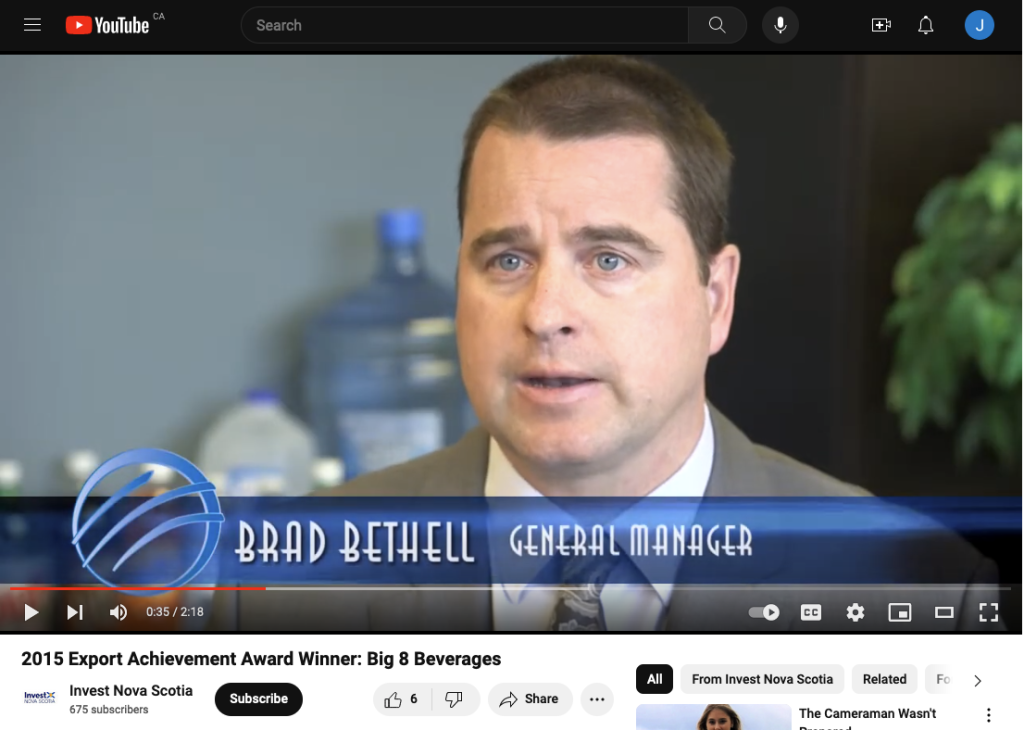This is the second of a two-part series looking at two commercial groundwater wells in Colchester County – one owned by the Sobeys company Big 8 Beverages, and the other by Canadian Springs, owned by Aquaterra. This article examines some of the environmental implications of such commercial water bottling, when the planet is experiencing not just a climate crisis, but also a plastic pollution crisis. This article was originally published by the Halifax Examiner, and the first article in this series is available here.
In June 2013, the year the Sobeys company, Big 8 Beverages, received a grant of nearly half a million dollars from the Nova Scotia government, it installed equipment in its Stellarton facility that allowed the company to produce its own bottles and to “significantly reduce” its costs.
Two years later, Big 8 won Invest Nova Scotia’s “export achievement award.” To honour the occasion, Invest Nova Scotia put together a promotional video for the company, which features narration from Brad Bethell, Big 8 general manager.

Screenshot from Invest Nova Scotia video featuring 2015 Export Achievement Award Winner: Big 8 Beverages, owned by Sobeys, showing its general manager, Brad Bethell.
In the video, Bethell said:
Essentially, we can bottle a 500 ml bottle of water inline from a pre-form all the way through to palletizing it without touching it, so it’s very efficient, very effective, and we actually produce over 250,000 single bottles a day.
You really have to understand your market that you’re operating in now, your domestic market, and make sure you’re one of the best. And then once you know the business model, the cost, the logistics, we work with NSBI [Nova Scotia Business Inc.] to make some great contacts to help educate ourselves, on what we need to do to be competitive, and to get into the export trade.

Still showing the Big 8 bottling plant in Stellarton, taken from the Invest Nova Scotia video promoting 2015 Export Achievement Award Winner: Big 8 Beverages.
Invest Nova Scotia also did a Q and A with Julie Nowe, Big 8’s finance and business development manager. Nowe said the “cost reduction” Big8 was able to make by producing its own bottles, and the bottling plant in Stellarton being close to the port of Halifax, positioned Big 8 for exporting “top-quality Canadian bottled spring water or soft drinks.”
“Now we’re exporting to China, Barbados, and Aruba, and we’re looking at further development in Asia and some Middle Eastern countries,” said Nowe.
“We have a niche here because of our excellent water source. We acquire our water from an underground aquifer in Valley, Nova Scotia, which is one of the purest aquifers in Canada,” Nowe noted.
As reported in Part 1 of this series, the two corporations extracting water in Colchester County for bottling are Empire Company that owns Sobeys, which in turn owns Big 8 Beverages, and Primo Water Corporation that owns Aquaterra, which in turn owns Canadian Springs.
According to Nova Scotia Environment and Climate Change (NSECC), Sobeys has a water withdrawal permit that allows it to withdraw 650,000 litres a day, which works out to 2.4 billion litres a year. For this, it pays the provincial government $360.27 annually. Aquaterra can withdraw 961,000 litres a day, or 3.6 billion litres a year, for which it pays $408.58 annually.












